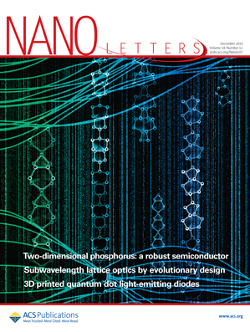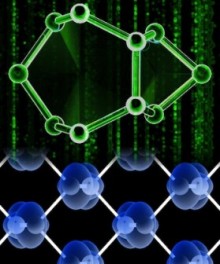Nano Letters features our work on the cover of its December 2014 issue
In a recent Nano Lett. article, we demonstrate that a 2D mono-elemental semiconductor is a promising candidate. This is exemplified by first-principles study of 2D phosphorus (P), a recently fabricated high-mobility semiconductor. Most of the defects, including intrinsic point defects and grain boundaries, are electronically inactive, thanks to the homoelemental bonding, which is not preferred in heteroelemental system such as MX2. Unlike MX2, the edges of which create deep gap states and cannot be eliminated by passivation, the edge states of 2D P can be removed from the band gap by hydrogen termination. We further find that both the type and the concentration of charge carriers in 2D P can be tuned by doping with foreign atoms.
The cover image represents a “phosphorescent” rendering of some structural and electronic signatures of 2D phosphorus arranged in a collage inspired by the digital rain from “The Matrix” movie.
See more at: Rice News: Phosphorus ‘rain’



